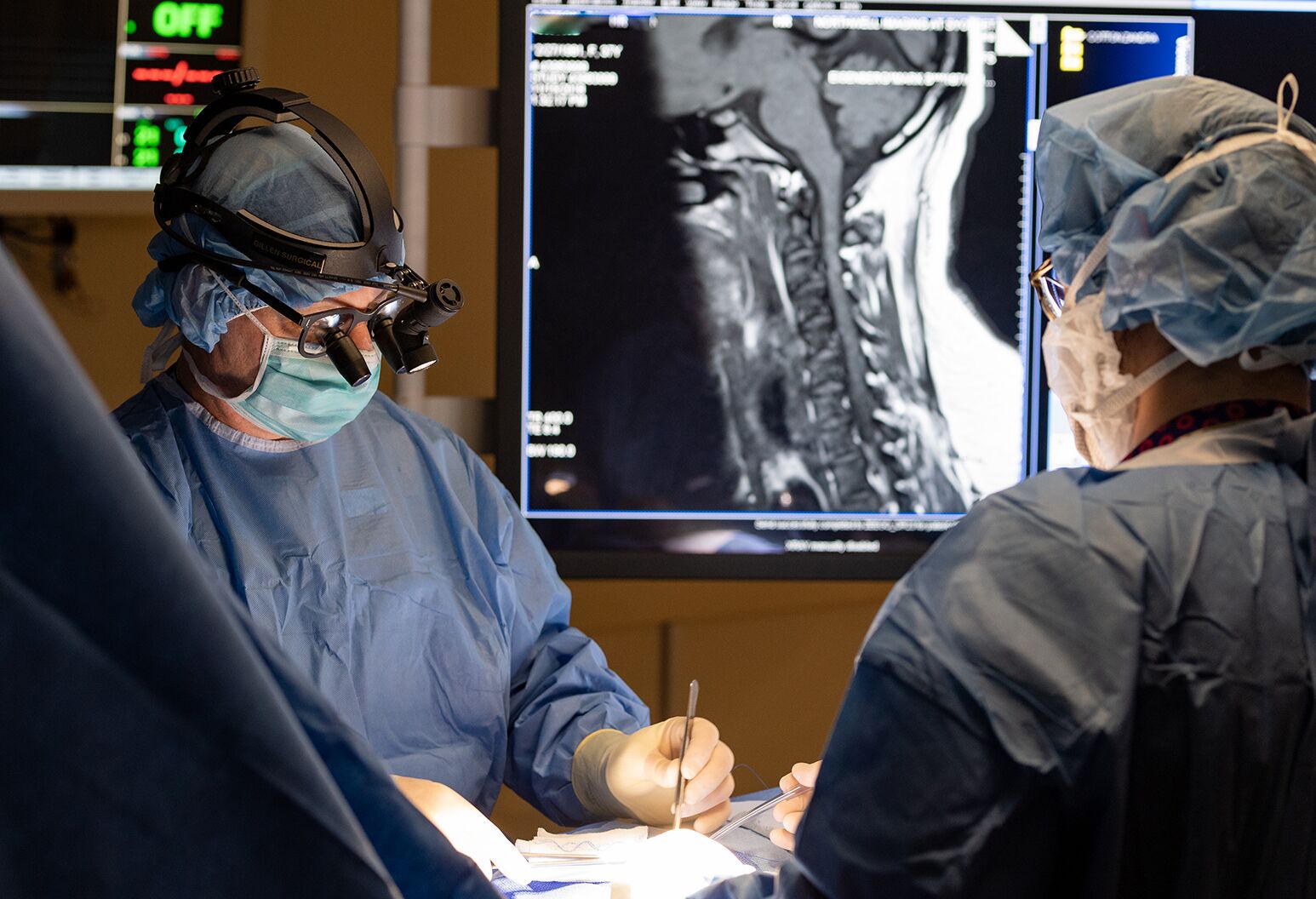Finding Affordable Options with the Best Spine Surgeons in St Louis MO
Finding Affordable Options with the Best Spine Surgeons in St Louis MO
Blog Article
An Introduction of Back Conditions That Usually Lead To Surgical Therapies
Spinal column conditions such as herniated discs, spinal constriction, and degenerative disc disease regularly demand surgical interventions when conventional treatments fall short to ease persistent symptoms. Comprehending the nuances of each problem and the matching surgical alternatives, such as discectomy or back combination, is essential for effective monitoring.
Herniated Discs
Although numerous people with herniated discs may find alleviation through traditional treatments, surgery comes to be a required factor to consider when signs worsen or linger - best spine surgeons in st louis mo. A herniated disc occurs when the soft internal gel of a spinal disc sticks out through its external layer, potentially leading and pressing nearby nerves to pain, feeling numb, or weakness in the extremities
Conservative administration typically consists of physical treatment, pain medicines, and corticosteroid injections, which aim to reduce inflammation and boost function. In instances where these approaches fall short to alleviate incapacitating signs, surgical options may be explored.
The most typical medical treatment for herniated discs is a discectomy, which includes the elimination of the herniated portion of the disc to soothe stress on the impacted nerve root. In a lot more serious cases, spinal fusion may be needed to support the impacted vertebrae.
Individuals are suggested to review the prospective risks and advantages of surgical treatment with their doctor to make an educated decision. Inevitably, the objective of any kind of surgical intervention is to bring back function, ease discomfort, and boost overall lifestyle for people dealing with herniated discs.
Spine Constriction
Spine stenosis occurs when the spaces within the spine slim, leading to increased stress on the back cord and nerves. This condition can create in numerous regions of the spinal column, including the cervical and back areas, usually as a result of age-related changes, such as degenerative disc illness, joint inflammation, or enlarging of ligaments.
Clients with spine stenosis may provide with signs that consist of discomfort, tingling, prickling, or weakness, primarily in the arms or legs. These signs can be intensified by activities that entail standing or walking, typically leading individuals to look for relief via traditional treatments like physical treatment, medicines, or epidural steroid injections.
However, when these non-surgical interventions fall short to offer adequate relief, medical options may be thought about. Typical medical procedures for back constriction consist of laminectomy, which involves the removal of part of the vertebra to relieve pressure, and spine blend, which stabilizes the afflicted location.
Spondylolisthesis
Spondylolisthesis occurs when one vertebra slips ahead over another, leading to imbalance of the spinal column. This problem can arise from numerous factors, including hereditary flaws, injury, or degenerative adjustments in the spine. It is most generally observed in the lumbar region, especially at the L4-L5 and L5-S1 degrees.

Therapy choices vary based upon the extent of the slippage and the signs and symptoms offered. Conventional steps, including physical treatment, discomfort monitoring, and task alteration, are often the first line of defense. When non-surgical strategies fall short to eliminate signs or when substantial nerve compression is existing, medical treatment might be called for. Surgical choices can include spinal combination or decompression procedures, targeted at bring back placement and minimizing neurological symptoms. Early medical diagnosis and proper management are critical for ideal end results in individuals with spondylolisthesis.
Degenerative Disc Illness

The condition can be diagnosed via a mix of scientific analysis, imaging research studies, and individual history. When these methods fail to give ample alleviation, medical interventions may be considered.
Surgical choices for DDD might include back blend or man-made disc replacement, targeted at maintaining the impacted segment and relieving discomfort (best spine surgeons in st louis mo). Inevitably, the option of treatment is individualized, thinking about the seriousness of the problem, patient wellness, and way of life aspects
Spine Growths

What factors add to the advancement of lumps within the back, and how do they materialize in individuals? Back tumors can occur from numerous factors, including hereditary proneness, ecological influences, and pre-existing medical conditions. They can be classified as main lumps, originating in the spinal column, or second tumors, which spread from other regions of the body. Individuals might present with a series of signs, including localized pain, neurological deficiencies, weak point, or modifications in digestive tract and bladder feature, relying on the growth's size and area.
Medical diagnosis typically includes imaging research studies such as MRI or CT scans, which assist delineate the tumor's features and effect on bordering structures. In evaluating treatment options, the tumor's type, grade, and place are important considerations. Surgical intervention may be called for to reduce signs, obtain a biopsy, or eliminate the growth completely. The goal of surgical procedure is typically to unwind neural elements and stabilize the spinal column. Adjuvant treatments, consisting of radiation or chemotherapy, might also be needed depending on the tumor's nature. Early discovery and treatment are essential for maximizing outcomes in people with spine tumors.
Final Thought
In summary, back conditions such as herniated discs, spinal constriction, spondylolisthesis, degenerative disc disease, and spinal growths often necessitate medical intervention as a result of their potential to trigger considerable discomfort and useful disability. While conventional treatments might supply momentary relief, medical choices end up being essential when symptoms persist or aggravate. Prompt diagnosis and treatment play a vital role in recovering function and boosting the quality of life for damaged people, underscoring the page relevance of extensive spine care.

Report this page